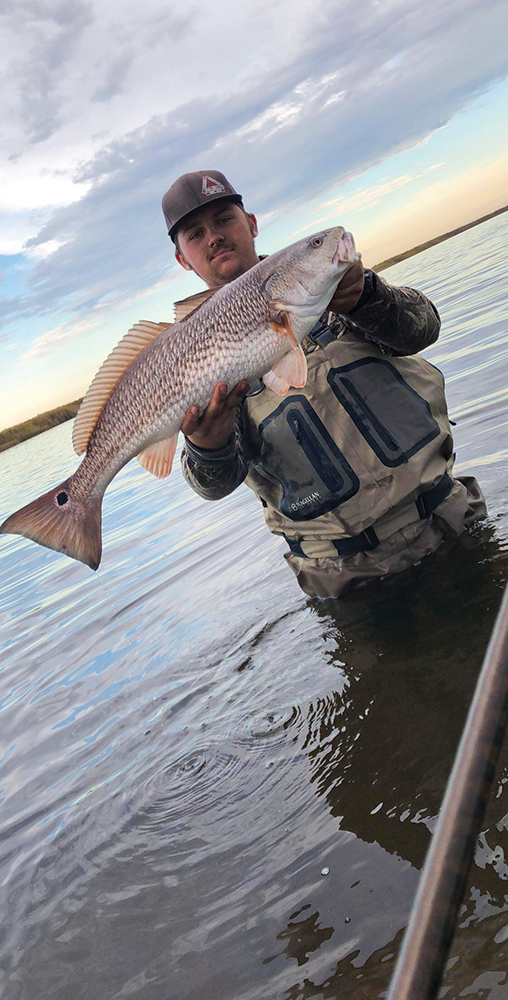Sabine Scene: February 2019

Thus far, we have yet to experience the bone chilling days of last winter, but aside from that, everything has pretty much started out the way it did in 2018. We are once again catching a few large trout and even the numbers of 16 to 20 inch fish has improved.
We still have a long way to go, but the majority of our cold weather grinders continue to release their trout in an effort to shorten the recovery process. I haven’t kept a trout in the past six months, but my impact has not been that significant as I have not caught a helluva lot of fish. Any little bit, however, has to help!
If you talk with only those anglers that choose to drift fish out of the boat, they will undoubtedly tell you that our trout bite has not improved at all, but they would have probably told you much the same thing in the more productive years. Having said that, putting on the waders and staying put has truly made a bigger difference thus far than it has in years past.
The keys to consistently catching trout on even the toughest days have been to cast rather than cruise during the majors and fish incoming afternoon tides whenever possible. If you can combine the two your odds of catching go up significantly.
Small exposed patches of shell in two to four feet of water are prime locations to homestead, but for the most part locating them requires a lot of exploring in lieu of actually fishing. Following Harvey we spent a lot of time drifting with nothing more than an egg sinker tied on searching out shell that had not been buried in silt.
For years the game plan for anglers with little free time on their hands was to target shallow water less than a cast away from deeper water. If that is your plan and you elect to take your chances on the north end of the lake, I would recommend staking out a point on the tip of any of the islands bordering the ICW. The south end of Pleasure Island, the north tip of Stewts and either end of Sidney and Rabbit are excellent places to start.
The point between East Pass and Coffee Ground also draws a crowd for good reason as well. Not only is the bottom easy to walk, but thousands of acres of marsh drain into Black’s Bayou and enter the lake less than a short cast off that point. The immediate impact of a tide change is amplified in all of these small areas.
If there is a traditionally dependable stretch of shoreline slow to come around thus far it would have to be the flats just south of Madam Johnson’s. We have enjoyed a few very good afternoons with the redfish, but the trout have been slow to return.
If catching redfish is OK with you, take heart in the fact that you don’t have to allow them to demolish your Corkys and Soft-Dines in order to catch them when they unexpectedly disrupt your trout bite. We are not passing on that bite either and have done very well with everything from a four inch Lil’ John to a five-inch rattail Assassin.
The silver lining to canceling eighty-four trips in 2018, other than less tax money owed the government, was that it afforded me more time to fish with youngsters and first time anglers. The look in their eyes conjures up memories of a time when every trip was an eagerly anticipated adventure that required nothing more than my presence to be a huge success.
I read every page of every secondhand Sports Afield or Field & Stream magazine I could get my hands on and, without ever leaving the den, caught everything from steelhead to sailfish. The perch I would catch the following day with a cane pole and small ball of bread were no less exciting. It was and still is…magic!
If you would like to immediately attain hero status, outfit a youngster from six to sixty with a seven-foot Laguna medium action spinning rod coupled with a 1500 or 2500 series reel spooled with 20 pound braid or 12-pound mono and take them fishing. That combination is easy to learn to cast and will handle everything from croaker to redfish.
Sharing your passion with a youngster does not require catching fish!